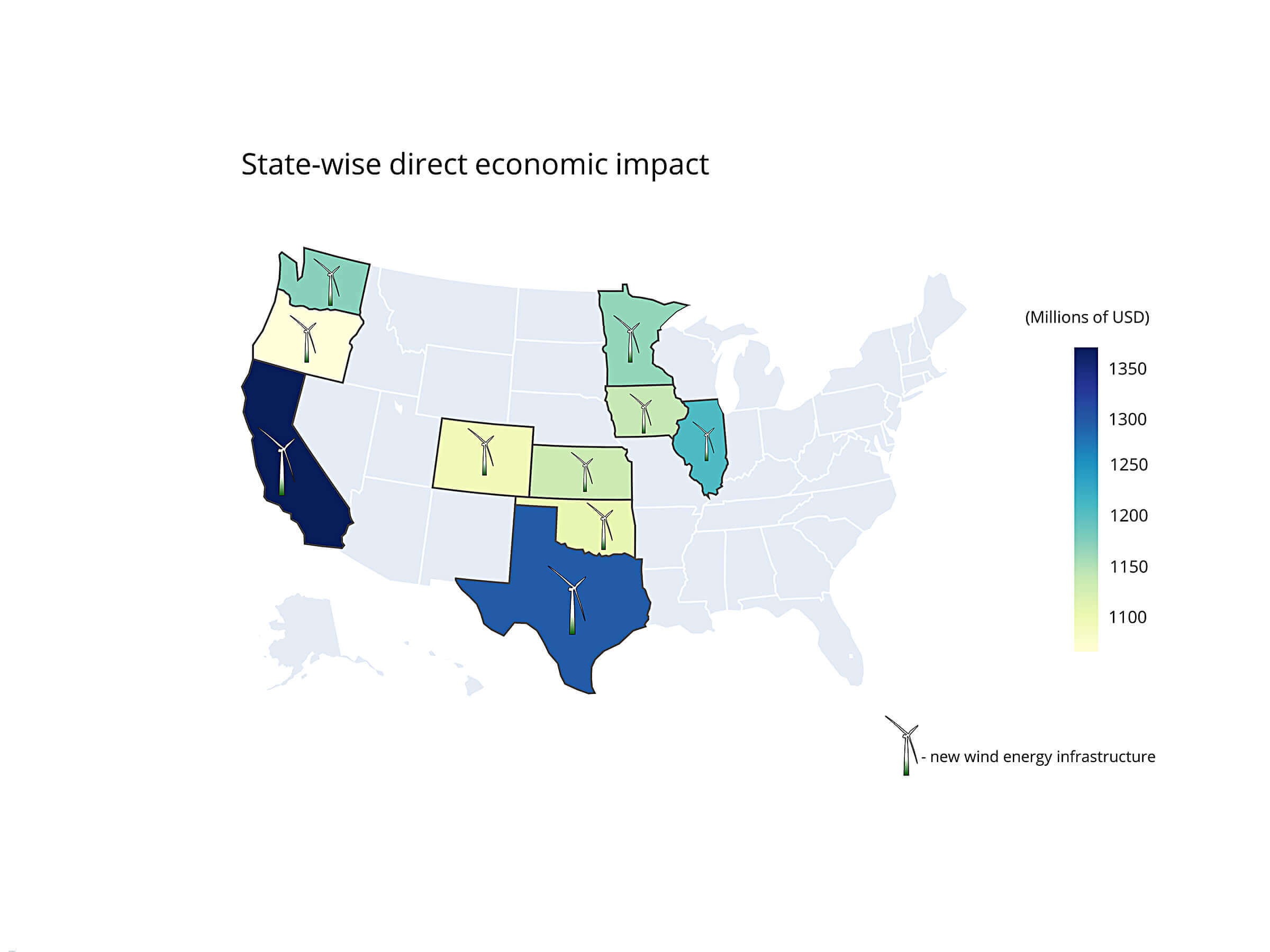Analysis: Wind energy expansion would have $27 billion economic impact
Wind, which generates less greenhouse gas emission than burning fossil fuels, is making up an increasing share of the energy production portfolio in the United States. But wind is not as efficient as coal or natural gas, causing some concern about its economic impact.
A Purdue University study that models increased wind production in 10 states shows significant economic impact in those states, as well as billions of dollars spread over the rest of the country. Led by Shweta Singh, an assistant professor in the Department of Agricultural and Biological Engineering and in Environmental and Ecological Engineering, a stand-alone academic unit in the College of Engineering, with colleagues at the University of Sydney, the results were published in the March issue of the journal Applied Energy.
“While the impacts are directly felt in the state experiencing the increase in economic activities due to installation of new wind energy generation capacity, the positive economic effects also spill over as shown by the MRIO calculations,” the authors wrote.
The analysis considers the effects of adding 500 megawatts each in 10 different states that produce the most wind energy in the U.S. — Texas, Iowa, Oklahoma, California, Kansas, Illinois, Minnesota, Oregon, Washington and Colorado. The result would be almost $24 billion in economic impact in those states, as well as an additional $3 billion throughout the rest of the United States.
“In states that get new wind energy capacity, we see significant economic impact, but there is also $3 billion that spills over into the other states because there is so much interdependency on products being manufactured there,” Singh said.
The U.S. currently has more than 100,000 MW of operating wind capacity, according to the American Wind Energy Association. Adding 500 MW in 10 states would be only a 5% increase but would have significant economic benefits.
Graduate student Gargyea Vunnava’s analysis was developed using a new USA multi-region input output (MRIO) model that considers how a shock affects not just one segment of the economy, but many interconnected parts and regions. A U.S. MRIO lab has been developed in Singh’s lab using the Industrial Ecology Virtual Lab infrastructure created at the University of Sydney. This is the first MRIO lab created for the United States.
The sectors that would see the most economic benefit would be manufacturing, construction, finance and insurance, transportation and warehousing, and public administration.
“We are so dependent on coal energy because the infrastructure has been built and it’s so cheap,” Singh said. “But this study shows that there is significant economic opportunity from increasing wind energy production, as well as spillover that touches every state and many employment sectors along with long-term impact on reducing greenhouse gas emissions.”
The Purdue Research Foundation funded this research.








